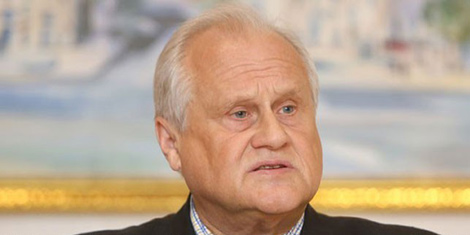Opinions & Interviews
Sajdik: Minsk process is working

KIEV, 13 February (BelTA-TASS) - The Minsk process remains a working tool, thanks to which many issues of the peaceful settlement of the conflict in the east of Ukraine have been setttled, OSCE’s special representative in the trilateral contact group on Ukraine ambassador Martin Sajdik said on the occasion of the third anniversary of the Minsk accords.
“Acting as Special Representative of the OSCE Chairman-in-Office, I am deeply convinced that there is simply no alternative to the Minsk agreements for the peaceful settlement of the conflict in eastern Ukraine. I cannot, in any way, agree with the statements that the Minsk agreements are not implemented and that the Minsk process is not working,” he said.
According to Ambassador Martin Sajdik, during the negotiations in Minsk the trilateral contact group has managed to regulate various issues envisaged in the Minsk agreements. “Implementing the Minsk accords of 19 September 2014 and 12 February 2015 the trilateral contact group adopted several decisions establishing a ceasefire. It also approved the supplemental weapons withdrawal agreement (29 September 2015), the decision on anti-mine activity and the decision on the total ban on the exercises with the use of all kinds of combat arms near the contact line (2 March 2016), the Framework Decision relating to disengagement of forces and hardware (20 September 2016) prepared by the working group on security affairs headed by Chief Monitor of the OSCE Special Monitoring Mission to Ukraine Ambassador Ertugrul Apakan,” ambassador martin Sajdik said.
As a result, he said, the number of civilian casualties in the conflict zone has reduced significantly. Thanks to the work of the group the parties also regulated the civil population flows through the line of contact, with the average number of crossings recently growing to 27,000 per day.
“As for the political issues, we discussed in detail the modalities of holding local elections in the certain areas of the Donetsk Oblast and the Lugansk Oblast, and also amnesty issues. Great headway was made in the humanitarian affairs. In late 2017 we prepared a big exchange of detainees. Although it was not the all-for-all formula as stipulated in the Minsk agreements, we continue actively working in this direction,” the OSCE’s special representative said.
Ambassador Martin Sajdik noted that today’s special focus is on the issues to provide necessary living conditions such as water, electricity and heat supply for the civilian population in the conflict zone.
“The Minsk process is working. However, to my regret, there are still incidents because of the lack of political will of the parties, and because the decisions taken within the framework of the Minsk process are not being implemented or are not sufficiently implemented. Also, to my great regret, the staff of the OSCE SMM are still facing the obstacles that complicate their access for effective monitoring and verification of the ceasefire and the withdrawal of heavy weapons in the conflict zone, and first of all in the certain areas of Donetsk Oblast and Lugansk Oblast. I am also very sorry that we have not yet managed to produce the previously agreed withdrawal of forces and hardware in the area of Stanitsa Luganskaya,” the OSCE’s special representative said.
The OSCE’s special representative also noted that the Minsk talks are not the only format used to search for the solutions to the conflict in eastern Ukraine. The Normandy Four is also actively involved in the matter. The Russian-U.S. consultations are held at the level of U.S. Special Representative Kurt Volker and Aide to the Russian President Vladislav Surkov.







 print version
print version make home page
make home page add to bookmarks
add to bookmarks

